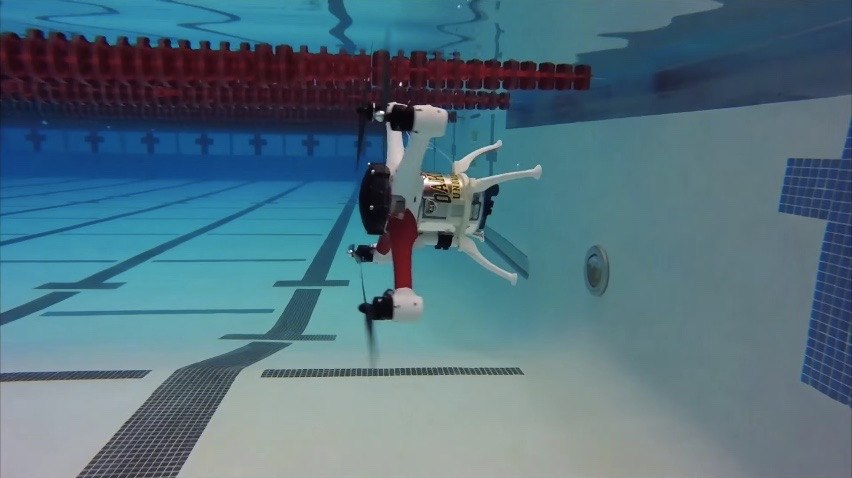A team of Oakland University engineers won $1 million in a contest for their creation of a drone that is capable of flying, skiing along the surface of water, and diving underwater. Deemed the Loon Copter and billed as an aerial-surface-underwater reconnaissance drone, the device earned the top spot in the 2016 United Arab Emirates “Drones for Good” competition in Dubai in February, beating out more than 1,000 other entries from 165 countries.

Drone enthusiasts have been developing new uses for these devices over the years, including capturing aerial videos to delivering packages. The intended purpose for the Drones for Good competition was to demonstrate how drones can “improve people’s lives and provide positive technological solutions to modern day issues.” Aside from the Loon Copter, the other top entries included an intelligent drone that is versatile enough to send itself into tight quarters during emergency situations, as well as a drone capable of autonomously detecting and repairing chemical-pipeline leaks.
What makes the Loon so special is a “buoyancy chamber” that allows the drone to float or submerge depending on how much water floods chamber. In the air, it can cover large areas and hover just like a traditional drone. On the surface, it is buoyant and can drop sensors below the water’s surface, and underwater, it can replace remotely operated underwater vehicles (ORVs).
As a waterproof aerial vehicle, Loon Copter has the ability to cover large distances over water in a shorter time period than a submarine. Its applications include underwater search, environmental monitoring, and subaquatic structure inspection, helping marine biologists and other researchers benefit from the vehicle’s versatility.
The Loon Copter’s buoyancy requires no energy to float, which is noteworthy as mid-air hovering has a high-energy expense. Its ability to swim allows the drone to make position adjustments to counteract wind and water currents. Buoyancy and depth control are performed by a water pump that regulates the amount of water ballast on-board. The drone has four motors that are used to maneuver underwater, and resurfacing is done by ejecting all ballast water and performing a water takeoff.
“Drones have this negative image associated with them now – surveillance and causing problems at airports and so on – but there are a lot of good uses for them, and this competition highlighted that,” said professor Osamah Rawashdeh, who led the team in creating the Loon Copter.
Source: EdTech
Advertisement
Learn more about Electronic Products Magazine





